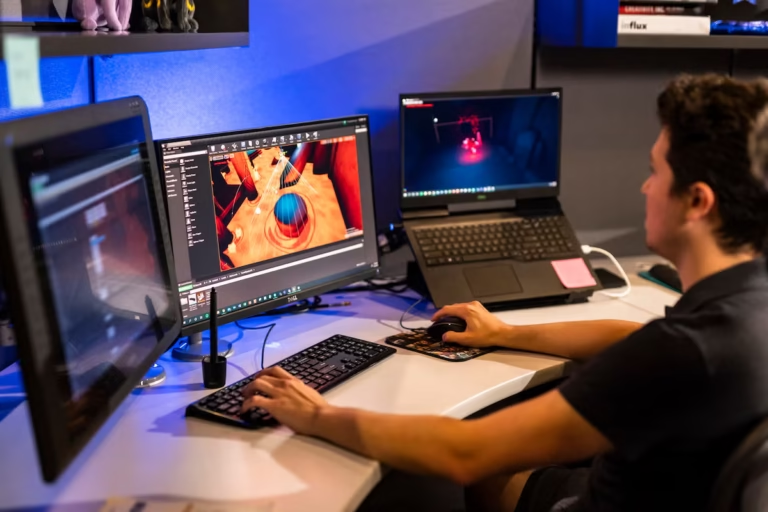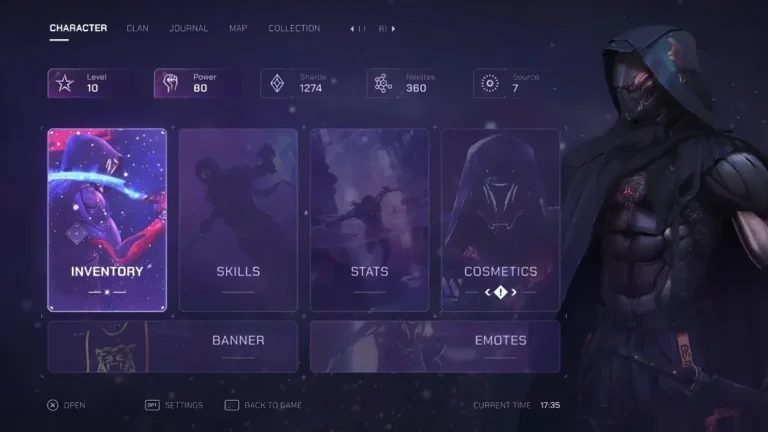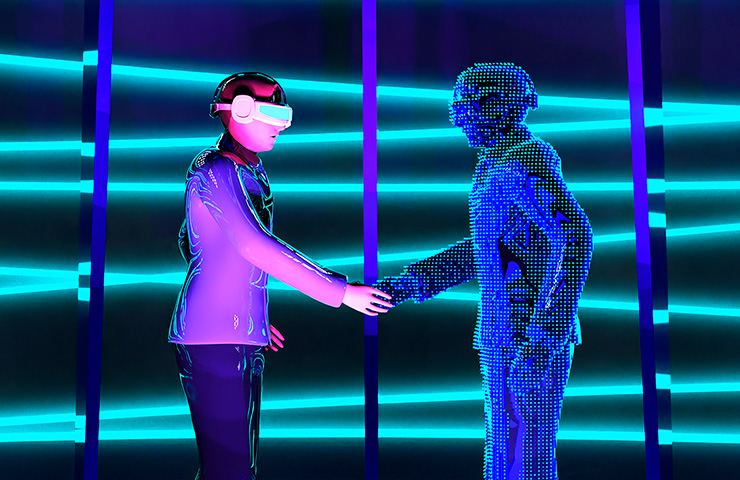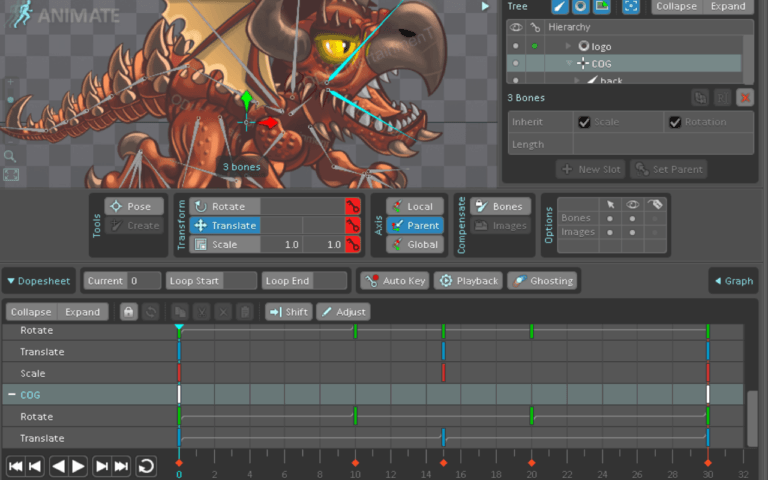In the evolving landscape of the game industry, one term that consistently commands attention is “AAA games.” These are not just games; they are technological marvels that push the boundaries of what’s possible in the area of interactive entertainment. From stunning graphics to intricate gameplay mechanics, AAA games represent the pinnacle of creativity and innovation.
In this article, we will unwrap the technical exploration of AAA games, unravelling their origin, diving into their historical evolution, dissecting the intricate technical aspects, and examining their profound impact on the gaming market.
- Definition of AAA Games and Their Importance
- Historical Evolution of AAA Games
- What Are the Features of AAA Games?
- Production Challenges and Budgets
- Impact on the Gaming Market
- Iconic AAA Games That Set Industry Standards
- Case Studies: Analysis of Successful AAA Titles
- Future Trends in AAA Game Development
- How Much Does It Cost to Develop an AAA Game?
- How Long Does It Take to Make an AAA Video Game?
- Game Engines Behind AAA Titles
- Environmental Sustainability


Need Game Art Services?
Visit our Game Art Service page to see how we can help bring your ideas to life!
Definition of AAA Games and Their Importance
The term “AAA” is not just a label; it’s a benchmark for excellence in the gaming world. AAA game art services are characterized by their high production values, expansive budgets, and commitment to delivering an unparalleled gaming experience.
Their importance in the gaming industry is undeniable, dominating the market and setting the standard for quality. As we peel back the layers of AAA games, we begin to understand what makes them not just games but cultural phenomena that captivate audiences worldwide.
Historical Evolution of AAA Games
To truly appreciate the current state of AAA games, we must trace their roots back to the early days of gaming. The transition from pixelated 2D worlds to immersive 3D environments marked a pivotal moment in the evolution of video games
This shift laid the foundation for what would later become AAA games as developers embraced the challenge of creating more realistic and cinematic experiences. Pioneering titles paved the way, setting the stage for the birth of the AAA genre.

What Are the Features of AAA Games?
Triple-A (AAA) games are the video gaming world’s blockbusters—gigantic productions of major studios, with gigantic budgets, enormous teams, and gigantic expectations. So what does a game need to do to make it into this highest level of prestige?
AAA titles typically have the backing of big-name publishers and entail huge investments in human capital, marketing, and talent. They’re typically released on multiple platforms and are supposed to be cinematic in nature, interactive in gameplay, and successful in the marketplace. Think of them as the video game equivalent of Hollywood blockbuster movies—sweeping in scope, feature-rich, and intended to draw in millions.
From The Witcher 3 to Grand Theft Auto V, these are the benchmarks of quality and innovation, trends that smaller studios and indie developers replicate and usually copy.
AAA games aren’t so much about huge budgets—a lot of money can be tossed at any game. They’re defined by the quality and richness of the experience that they provide. These are the items that distinguish them:
Read More About Art Styles in Indie Games vs. AAA Games
Visually Stunning Graphics
AAA games are famous for their visual quality and graphical coherence. These games are on the bleeding edge of what is possible on console and PC, with complex 3D graphics rendering, ray tracing, dynamic lighting, motion capture, and realistic textures.
Game developers such as Naughty Dog and CD Projekt Red invest huge sums of money in graphics engines and animation systems to create relatable characters and environments. And the result? Games that are essentially interactive movies.
Gameplay Mechanics
While breathtaking visuals are a hallmark of AAA games, their gameplay mechanics are equally crucial. These games often boast intricate, multi-layered gameplay that goes beyond the simple mechanics of their predecessors.
From open-world exploration to complex decision-making systems, the gameplay in AAA titles is designed to immerse players in a rich and dynamic experience. The complexity of these mechanics is a testament to the dedication of developers in crafting games that are not only visually stunning but also intellectually engaging.
Rich Storytelling
Narrative depth and emotional investment are the other side of AAA games. They are not games played, but games lived through. The companies employ professional writers, screenwriters, and authors to create rich universes with cinema-level plots, character development, and lore.
Whether it’s through surviving the post-apocalyptic chaos of The Last of Us or unraveling political intrigue in Assassin’s Creed, these kinds of games engage the player emotionally and keep them coming back for more.
Sound and Music
In the field of AAA games, the role of audio cannot be overstated. The soundscapes and music contribute significantly to the overall gaming experience, creating an emotional resonance that enhances immersion.
From dynamic soundtracks that adapt to in-game events to spatial audio that places players in the center of the action, the audio design in AAA games is a sophisticated art form that adds depth and texture to the virtual worlds they create.
Multi-platform Development
With gaming platforms evolving rapidly, AAA developers face the challenge of creating games that run seamlessly across a variety of devices. From high-end gaming PCs to the latest consoles and even mobile platforms, optimizing games for diverse hardware specifications requires meticulous attention to detail. The ability to deliver a consistent and high-quality experience on various platforms is a testament to the technical prowess of AAA development teams.

Production Challenges and Budgets
Creating an AAA title is a monumental undertaking of high risk and even higher cost. From managing large teams and complex workflows to balancing deadlines and creative vision, developers are under immense production stress. With budgets often exceeding hundreds of millions of dollars, even minor delays can result in enormous financial losses, so efficiency and risk management are of the highest priority in AAA development.
High Production Costs
While the end result of AAA games is a captivating experience for players, the journey to create these masterpieces is fraught with challenges. High production costs, including expenses related to graphics, voice acting, and marketing, contribute to the financial pressure on developers. As budgets skyrocket, the risk of financial setbacks looms large, making each AAA project a significant investment for both developers and publishers.
Team Collaboration and Size
The creation of AAA games is a collaborative endeavor that requires the coordination of large development teams. Cross-disciplinary collaboration is essential, with a game art studio and artist programmer, writer, and more working in tandem. The sheer size of these teams, sometimes numbering in the hundreds, necessitates effective project management and communication to ensure the cohesive realization of the game’s vision.
Impact on the Gaming Market
AAA titles are a driving force behind the shape of the world gaming market. They dictate trends, they influence what players expect, and they push technological advancement on every platform. They can make or break a studio, and their popularity usually dictates where the market is heading next—from gameplay mechanics to monetization schemes.
Market Trends and Consumer Expectations
The influence of AAA games extends far beyond the development studios. These games play a pivotal role in shaping broader market trends and setting consumer expectations. Innovations introduced by AAA titles, whether in terms of graphics, gameplay mechanics, or narrative complexity, often become benchmarks that other developers strive to meet. As players become more discerning, the pressure on developers to deliver groundbreaking experiences continues to escalate.
The economic significance of AAA games in the entertainment industry cannot be overstated. The revenue generated by blockbuster titles often rivals or even surpasses that of major Hollywood productions. The success of these games has turned the gaming industry into a cultural and economic powerhouse, attracting investments and reshaping the landscape of entertainment consumption.
Criticisms and Challenges
However, the journey to AAA success is not without its controversies. The industry has faced scrutiny for practices such as crunch culture, where developers endure long working hours to meet tight deadlines. Additionally, concerns have been raised about the potential impact of large budgets on creativity and innovation, with some arguing that the pursuit of commercial success may stifle risk-taking and experimental game design.
Iconic AAA Games That Set Industry Standards
Some of the best-selling examples of AAA games are ones that showcase the best the industry has to offer:
- The Witcher 3: Wild Hunt – a fantasy RPG franchise with deep storytelling, complicated characters, and a sweeping open world.
- Red Dead Redemption 2 – A Western masterpiece that’s unrealistically beautiful and features a living, breathing world.
- Elden Ring – A Soulsborne classic that combines open-world freedom with difficult but rewarding action.
- Cyberpunk 2077 – Initially rocky, but grew into a visually stunning RPG with rich customization and narrative.
- God of War: Ragnarök – A mythological action-adventure game with emotionally powerful storytelling.
Games like these aren’t just high on critical praise—they’re landmarks of video game history.
Case Studies: Analysis of Successful AAA Titles
Case Study 1: “Assassin’s Creed Valhalla”
Ubisoft’s “Assassin’s Creed Valhalla,” released in 2020, marks a significant entry in the long-running franchise. Set during the Viking invasion of England, the game showcases the capabilities of modern AAA game development. Its sprawling open world, meticulous attention to historical details, and a narrative that intertwines with real historical events have garnered praise. The game’s success lies in its ability to seamlessly blend action, exploration, and a rich narrative, demonstrating the ongoing evolution of the Assassin’s Creed series.
Case Study 2: “Horizon Zero Dawn”
Developed by Guerrilla Games, “Horizon Zero Dawn” emerged as a standout title upon its release in 2017. The game introduces players to a lush post-apocalyptic world where robotic creatures roam the landscape. Its success can be attributed to the fusion of a unique setting, compelling narrative, and innovative gameplay mechanics. The protagonist, Aloy, and her journey to unravel the mysteries of her world have resonated with players, showcasing the potential for new and original intellectual properties in the AAA space.
Analysis and Takeaways: These case studies offer a glimpse into the diverse landscape of AAA game development. “Assassin’s Creed Valhalla” highlights the ability to reinvigorate long-standing franchises through innovative settings and refined gameplay mechanics. On the other hand, “Horizon Zero Dawn” showcases the potential for entirely new and original IPs, emphasizing the importance of a well-realized world, engaging characters, and a unique gameplay experience.
These examples reinforce the idea that successful AAA games often strike a delicate balance between innovation, storytelling, and player engagement. As the gaming industry continues to evolve, these case studies serve as benchmarks for developers looking to push boundaries and captivate audiences with fresh, compelling experiences.

Future Trends in AAA Game Development
AAA gaming is evolving at a rate never before experienced, driven by relentless technology innovation and shifting gamer appetite. With AI-powered hyper-realistic graphics, totally immersive open worlds, and cross-platform shared worlds, the AAA game development future has aggressive innovation written all over it. Not only are developers pushing limits with storytelling and interactivity, but they are also embracing the clouds, procedural generation, and green design as well. Here’s a rundown of the groundbreaking trends that will shape the future of blockbuster games.
Technological Advancements
Looking ahead, the future of AAA game development is shaped by emerging technologies. Innovations such as virtual reality (VR), augmented reality (AR), and artificial intelligence (AI) hold the potential to revolutionize gaming experiences. The integration of these technologies will not only enhance realism but also open new avenues for creativity and interactivity.
Evolving Consumer Demands
As player demographics diversify, developers must adapt to evolving consumer demands. The rise of live-service models, episodic content, and ongoing updates reflects a shift in how players engage with games. Developers must navigate these changes, balancing the traditional blockbuster model with the demand for ongoing, dynamic gaming experiences.
Inclusive Design and Accessibility
The future of AAA game development is not solely about technological advancements but also about inclusivity and accessibility. Game developers are increasingly recognizing the importance of inclusive design, ensuring that games are accessible to players of all abilities. Efforts to improve representation in character design and the implementation of features for players with disabilities are becoming integral parts of the development process.
Online and Social Features
Creating immersive and believable fantasy worlds requires a meticulous eye for detail. From sprawling landscapes mirroring real-world topographies to intricate architecture and carefully crafted natural elements, every aspect contributes to a cohesive and enchanting environment that captivates players.
Virtual Reality (VR) and Augmented Reality (AR)
The potential of VR and AR in AAA games is a tantalizing prospect for the future. The immersive nature of VR can transport players to entirely new realms, while AR has the potential to blend the virtual and real worlds seamlessly. These technologies offer not only new possibilities for storytelling and gameplay but also challenges in terms of hardware requirements and player adoption.
Microtransactions and Monetization
Ethical considerations in AAA game development extend to monetization strategies, particularly the controversial topic of microtransactions. Balancing the need for revenue generation with player satisfaction is an ongoing challenge. The industry is exploring alternative models, such as cosmetic-only microtransactions and subscription services, to find a middle ground that benefits both developers and players.
Representation and Diversity
The push for increased representation and diversity in AAA games reflects a broader societal shift towards inclusivity. Game developers are actively working to address concerns related to stereotypes and underrepresentation, aiming to create games that resonate with a diverse global audience. The narrative and character design are increasingly being scrutinized for their potential impact on players and society at large.
AAA game development has transcended geographical boundaries, with international collaboration becoming the norm. Development teams often consist of individuals from various countries, bringing diverse perspectives to the creative process. This globalization of game development not only enriches the industry but also introduces challenges related to language, culture, and differing regulatory environments.
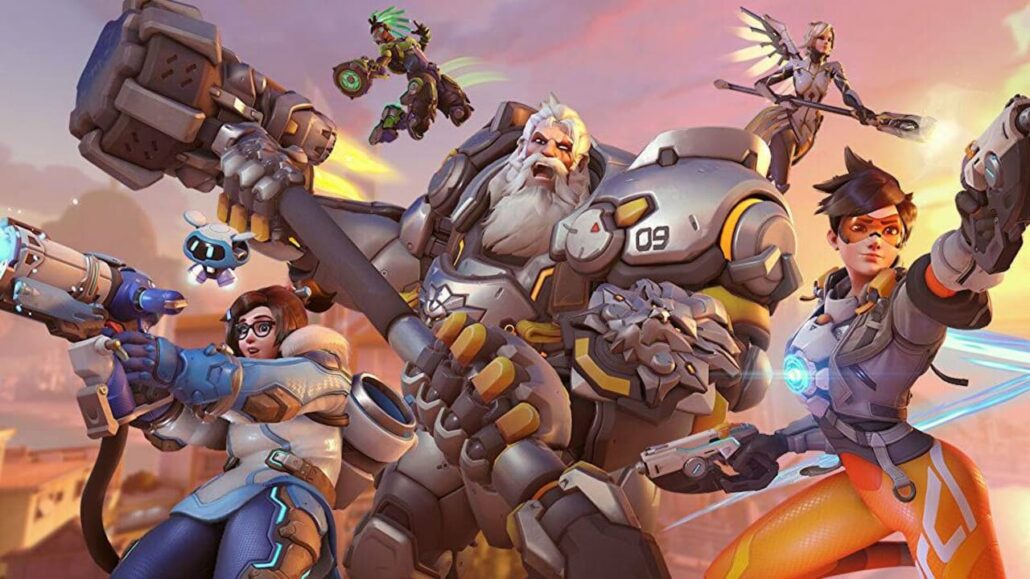
How Much Does It Cost to Develop an AAA Game?
Creating an AAA game is a multi-million-dollar undertaking, depending on the scope, team, and development duration of the game. The cost ranges from $50 million to over $200 million.
Example:
- Grand Theft Auto V was estimated to have a budget of $265 million, including advertising.
- The Last of Us Part II is estimated to have cost $100 million+ to develop.
- Cyberpunk 2077 surpassed $300 million when post-game released patches and advertising and development expenses are factored in.
This total cost is due to:
- High-end game engines (like Unreal Engine 5)
- Blizzard-level motion capture and voice acting
- Big developer teams (generally hundreds of people)
- Hollywood-level advertising campaigns
How Long Does It Take to Make an AAA Video Game?
A typical AAA game development cycle can be complicated and lengthy, typically taking anywhere from 3 to 6 years, with some games that incorporate new mechanics or open worlds taking longer.
Stages consist of:
- Pre-production (planning, concept, scripting)
- Production (coding, game development, level design, 3D modeling)
- Post-production (polishing, bug fixing, QA testing, localization)
Games like Horizon Forbidden West and Starfield took between 5–7 years from development to launch. Delays do occur, especially if developers have to get everything right or switch engines mid-development.
Game Engines Behind AAA Titles
The game engine is the lifeblood of any AAA game. It’s the software framework that drives everything from graphic rendering to physics and AI management.
Unreal Engine, Unity, RE Engine, and More
- Unreal Engine: The go-to industry standard engine most utilized for AAA game development due to its high-end graphics and real-time capability. Fortnite, Hellblade II, and The Matrix Awakens are some breathtaking examples that show its range.
- Unity: Although widely believed to be utilized in indie games, Unity has seen application even in larger games, offering scalability and cross-platforming.
- RE Engine: This internal engine was developed by Capcom and has been utilized in the likes of Resident Evil Village and Devil May Cry 5, which are both renowned for their buttery-smooth performance and film-level graphics.
Custom Engines and Proprietary Tech
The majority of the large studios develop their own custom engines tailored to their own gameplay and design needs:
- RAGE (Rockstar Advanced Game Engine) – Utilized in GTA V and Red Dead Redemption 2
- IW Engine – Powers Call of Duty games
- Creation Engine – Used by Bethesda for Skyrim and Starfield
Custom engines offer extremely customized features and full control over performance optimizations, but require more resources and time to maintain.

Environmental Sustainability
As gaming grows, so does its ecological footprint. From the power consumed by massive development studios to the carbon dioxide of millions of gamers using high-spec consoles and PCs, going green has become important. Luckily, the majority of AAA game studios are now beginning to take their part in climate change seriously and adopt greener methods. From carbon-neutral production chains to eco-friendly game engines, the race towards environmental sustainability is transforming the way AAA games are made and played.
Carbon Footprint of AAA Game Development
The environmental impact of AAA game development is a growing concern. The high-powered hardware required for gaming, coupled with the demand for constant updates and server maintenance, contributes to a substantial carbon footprint. Efforts are underway to explore more sustainable practices, from optimizing game engines to adopting eco-friendly hardware solutions.
Sustainable Game Development Practices
In response to the environmental challenges, there is a growing movement towards sustainable game development practices. Studios are exploring ways to reduce waste, lower energy consumption, and offset carbon emissions. The industry is recognizing the importance of environmental responsibility and the role it plays in the overall impact of AAA game development.

Conclusion
In conclusion, the world of AAA game development is a dynamic and ever-evolving realm. From its humble beginnings in the pixelated landscapes of early video games to the intricate, lifelike worlds of today, AAA games have become a cornerstone of the entertainment industry. As we peer into the future, the industry is poised for continued innovation, embracing new technologies, addressing ethical considerations, and responding to the diverse needs of a global gaming audience.

